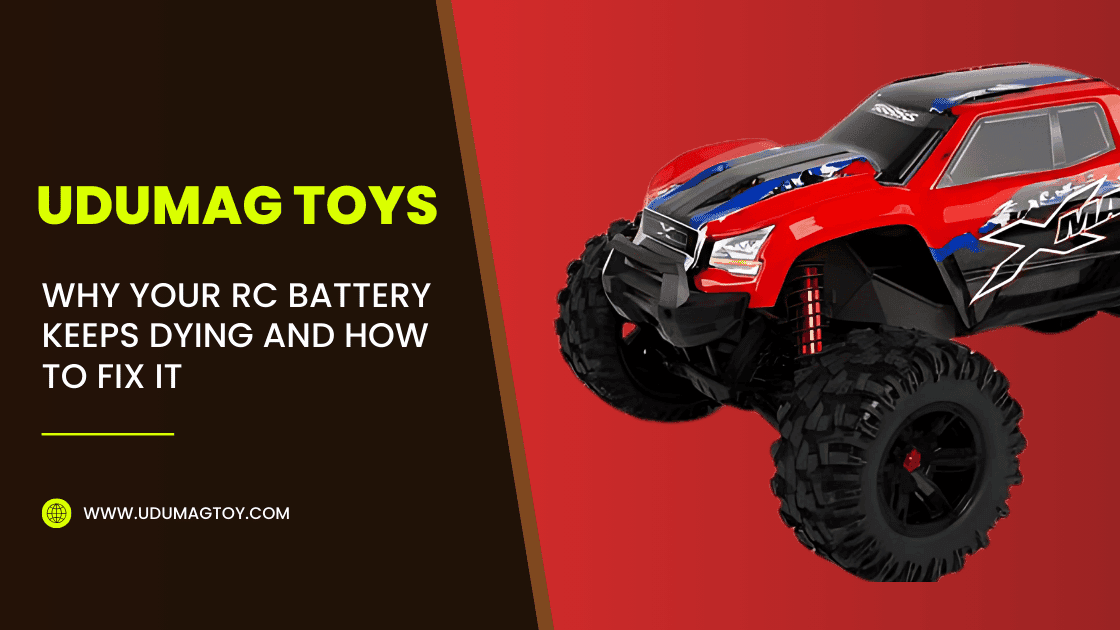Imagine you’re all set for an exciting day of racing your favorite remote-controlled (RC) car. The adrenaline is high, the track is ready, and then it happens: your RC car dies unexpectedly. You check the battery, only to discover it won’t hold a charge. This scenario is all too familiar for many RC enthusiasts. Dying batteries can sour the fun of your hobby and leave you frustrated.
This article will explore the common causes of premature RC battery death and provide practical solutions to extend battery lifespan and performance.
Understanding RC Battery Chemistry & Lifespan
Battery Types and Their Characteristics
When it comes to RC batteries, choosing the right type is crucial. The three main types are:
- LiPo (Lithium Polymer): Popular for their high energy density and lightweight design. They usually last 300-500 cycles and require specific charging conditions to avoid damage.
- NiMH (Nickel Metal Hydride): Known for being more robust than LiPo, NiMH batteries offer ease of use but typically have a lower energy density. Their lifespan ranges from 500 to 1,000 cycles depending on usage and care.
- NiCd (Nickel Cadmium): Although less common now, NiCd can handle extreme conditions and have a lifespan similar to NiMH. However, they suffer from the “memory effect,” which can impact their performance if not fully discharged regularly.
Factors Affecting Battery Lifespan
Several elements can influence how long your battery lasts:
- Charging cycles: Each time you charge and discharge your battery, you use up a cycle. Excessive cycles shorten lifespan.
- Storage conditions: Storing batteries in extreme temperatures can cause deterioration or swelling.
- Discharge rates: High demand or heavy use can stress the battery, leading to early failure.
- Age: Even if a battery hasn’t been used much, aging can still reduce its capability.
Typical Lifespan Statistics
- LiPo batteries: 300-500 cycles
- NiMH batteries: 500-1,000 cycles
- NiCd batteries: 1,000 cycles or more, if maintained well
Understanding these factors can help you take better care of your batteries.
Diagnosing Your Dying RC Battery
Symptoms of a Failing Battery
How do you know if your battery is on its last legs? Look for these signs:
- Low voltage under load: If your battery can’t power your RC vehicle adequately, it’s a red flag.
- Reduced run time: If you notice your vehicle runs shorter than before, that’s a sign.
- Rapid voltage drop: Monitoring voltage can show a steep drop-off during usage.
- Puffing or swelling: This physical change indicates serious damage and can be dangerous.
Testing Your Battery
Testing your battery is straightforward:
- Voltage under load testing: Use a multimeter during operation to check the voltage.
- Battery analyzer: A specialized tool can assess capacity and performance over time.
Common Misdiagnoses
Sometimes symptoms can trick you. Issues with the electronic speed controller (ESC) or connections can mimic battery issues. Always check these components before concluding that your battery is faulty.
Charging Practices & Their Impact
Proper Charging Procedures
Using the right charger for your battery type is vital. Here’s what you need to know:
- LiPo batteries: Always use a LiPo-specific charger with the correct settings.
- NiMH and NiCd: These batteries can use standard chargers, but it’s best to follow manufacturer guidelines.
Avoiding Overcharging & Undercharging
Proper charging is essential to battery health. Both overcharging and undercharging can dramatically reduce lifespan. Statistics show that even a brief overcharge can lead to significant capacity loss.
Storage Charging
When storing batteries, consider the following:
- LiPo storage voltage: Store at around 3.7-3.8 volts per cell.
- Temperature: Keep them in a cool, dry place for optimal longevity.
Operational Factors Affecting Battery Life
High-Current Draw Activities
Aggressive driving, such as quick accelerations or sharp turns, can draw high currents from your battery. This stress can lead to faster wear.
Environmental Conditions
Temperature plays an essential role in battery performance. High temps can cause overheating and reduced lifespan, while low temps can hinder performance.
Proper Maintenance
Regular maintenance can prolong your battery:
- Cleaning battery contacts: Dust and grime can impede connections.
- Inspecting for damage: Look for signs of wear or swelling regularly.
Extending the Life of Your RC Battery
Choosing the Right Battery
When selecting a new battery, consider:
- Capacity: Match the capacity to your vehicle’s needs.
- Discharge rate: Make sure it can handle your vehicle’s demands.
Improved Charging Habits
Adopting better charging habits can make a difference:
- Use the appropriate charger.
- Always monitor charging times.
Storage Recommendations
To keep your batteries in top shape, follow these guidelines:
- Store in optimal temperatures.
- Maintain proper storage voltage to prevent damage.
Conclusion
Dying RC batteries can be a hassle, but understanding the common causes can lead to effective solutions. By following the outlined steps—testing, proper charging, operational care, and maintenance—you can prolong your battery’s life.
Share your experiences and tips in the comments to help others keep their RC batteries healthy and long-lasting.





 No products in the cart.
No products in the cart.